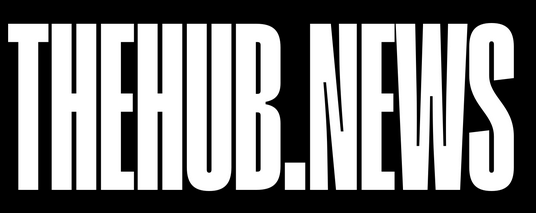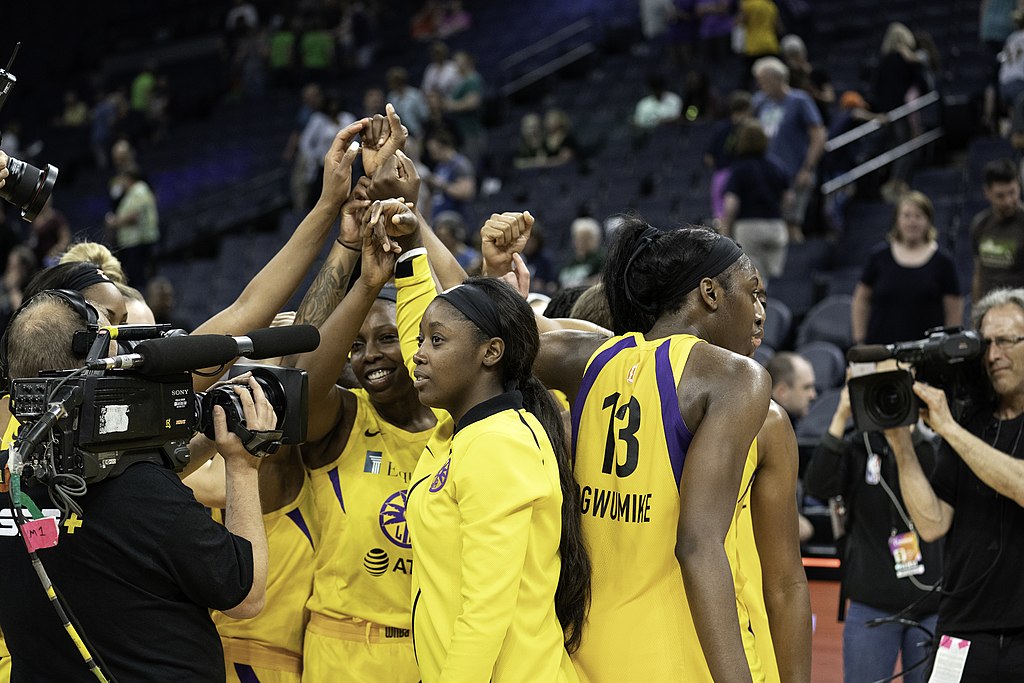WOMEN ENFORCERS
Gentlemen who have graduated to the professional ranks aren’t the only ones to have cohorts on the team who are there to do the dirty work and keep the opposition in order. The ladies also have folks who will buoyantly keep things in line on the hardwood.
One such person was Latasha Byears of the Los Angeles Sparks. In addition to contributing to “the Bigs” up front, her primary job was to protect the back of eventual Pro Basketball Hall of Famer and superstar Lisa Leslie.
Colleague, friend, and longtime sportswriter Jason Levin spoke with me via phone and informed me of a piece he’d written for the L.A. Times (along with Sandra Kobrin) regarding Byears several years ago. “At 5-feet-11 and 203 pounds, Latasha Byears epitomized the power in power forward. She used her girth to set body-crunching picks that freed up Los Angeles Sparks center Lisa Leslie to score. On defense, she snatched rebounds and dogged the opponent’s best shooter. If a player physically rubbed her or a teammate the wrong way, Byears exacted payback, committing hard fouls while helping the Sparks win back-to-back championships.” [2]
Leslie has acknowledged that the Sparks, sans the intimidating presence of Byears, would not have been crowned WNBA champs in 2001 and 2002. There is no such player on the Indiana
Fever yet. It won’t be long before someone is acquired or tapped on the shoulder to fulfill that task.
While many frown upon the notion, the consensus is that any team with a star player needs someone to provide toughness to the lineup. “After Chennedy Carter knocked down Caitlin Clark, countless people believe that the Indiana Fever desperately need to sign an enforcer to their roster. Well, there’s a five-time All-Star willing to fill that role. In an interview with TMZ, Angel McCoughtry talked about Clark’s situation as well as the current landscape of the WNBA. McCoughtry made it abundantly clear that she’s willing to be an enforcer for the [Indiana] Fever. ‘Take care of your players. All of y’all. I don’t care who it is,’ McCoughtry told TMZ. ‘If somebody is dragging your player down by the neck, I’m in your face. What the hell are you doing? Hey, we can go have lunch later, but right now, we’re competing. Don’t grab my player like that.’” [3]
While the sport may be devoid of sticks and pucks, shoulder pads, helmets and chop blocks, the order of physicality, particularly under the glass, is subtle and substantial.
PRESSURE COOKER
During Clark’s senior year at Iowa, comparisons were made between her and former collegiate sensation “Pistol” Pete Maravich. Pete played with flair, flashiness, and an unworldly ability to shoot, dribble, and pass. The men’s all-time leading scorer in NCAA history (with a 44.2 points per game average) was almost always a one-person show for the LSU (Louisiana State University) Tigers. Upon arriving at the pros, Pete had a huge contract, which made him the highest-paid player by light-years on a strong Atlanta Hawks squad. Pete had a bullseye on his back. To his credit, he played very well and had an excellent career. Although surrounded by skilled teammates early on, Maravich could never lead his team to the promised land. He and his brethren were usually seen as a “tough out” in the playoffs.
For all of his friendliness and attempts to consort with his teammates in Atlanta, one night, his frustration boiled over after a road game in Chicago. Amid a losing streak, Maravich, known to drink a little too often, let his Atlanta teammates understand how he felt about them in an inebriated state. While stumbling through a hotel lobby after a game, he spotted his 6’11” teammate (and eventual fellow Hall of Famer) Walt Bellamy and screamed, “I hate all of you N****rs!” [4] Bellamy kept his cool and muttered back, “Take this crazy motherf****r back to his room [before he gets hurt].” [4]
Maravich was far from coy. He voiced his disapproval regarding what he felt was an out-and-out snubbing regarding the 1971 NBA Rookie of the Year vote. “Pistol” received only 4 of 192 votes for the honor. “In his mind, it was proof that there was a league-wide jealousy that ruined his first pro season. ‘I want to forget it,’ he said. ‘[Next season] I’ll be regarded as a second-year man, but I feel like a 10-year man.’ The season might have aged him, but not his fans. The most dedicated were the youngest, their steam and affection undeterred by the envy of his contemporaries or by his bouts of self-loathing.” [4]
Individually, Pete Maravich is one of the game’s all-time greats, and his NBA tenure (24.2 ppg.) was considered a success. The five-time all-star and four-time all-pro was inducted into the Pro Basketball Hall of Fame in 1987.
On the other hand, in the same season in which Maravich was an NBA rookie, another much-anticipated player chose to work in the ABA. His name was Rick “The Rocket” Mount. He was the first high school basketball player ever to be featured on the cover of Sports Illustrated. The Lebanon, Indiana native could burn the nets. While at Purdue University, he put up astronomical numbers, leading his team to the 1969 NCAA Final Four. Rick scored 28.4, 33.3, and 35.4 points per game in three varsity seasons.
There was a predicament, however, when he went to the pros. Wanting to stay close to home, he signed with the Indiana Pacers. The Pacers were the defending champs. However, the ABA had an unwritten “rule” that the highest bidder (or regional franchise) could acquire any available collegiate star, especially if they were snatching that candidate from the NBA.
Mount was relatively shy (once the final buzzer sounded) and deemed by some as arrogant; furthermore, the franchise was stacked at the guard position (Freddie Lewis [all-star], Warren Jabali [all-star], Billy Keller). All three, including Keller, who played in Mount’s shadow at Purdue, were better in the ABA.
Like those clamoring for Clark to be granted a spot on the Olympic team, locals from West Lafayette to Indianapolis demanded that the Hoosier native get a chance to play. The coach reluctantly tinkered with the rotation. Lewis, a potential Hall of Famer, was booed unmercifully with any misstep as the fans wanted more time for the hometown hero. The expectations were nonsensical. Mount averaged 6.6 points as a rookie (‘71) and more than doubled that the following year. Still and all, when the fans became painfully aware that he had encountered a glass ceiling, they turned on him. The Pacers would win another title (Freddie Lewis was the ‘72 Playoffs/Finals MVP), but Mount was a certifiable malcontent. The Pacers traded Rick to the rival Kentucky Colonels at the season’s close.
“What seemed an ideal marriage was troubled from the start [in Indiana]. Pacers coach Slick Leonard didn’t want him in the first place, and the two never meshed in their two seasons together. Mount averaged 14.3 points and started 50 games in his second season but still didn’t feel wanted. He privately asked for a trade during the regular season, then went public with his desire on May 14, 1972, when the Pacers were three games deep into the championship round of the playoffs. ‘I was done with them,’” said Mount, “‘[Leonard] wasn’t ever going to give me a chance.’” [5]
“I think I signed too early,” Mount told Tony Kornheiser of Newsday. “I should have waited for the NBA draft. If I hadn’t signed right away, I’d probably have gone with the NBA. I really like the NBA.” [5] Hindsight is theoretically 20/20. Had Mount chosen the NBA, the Los Angeles Lakers would have owned his draft rights. Once again, stiff competition would have circumscribed him to a reserve guard position at best. Eventual Hall of Famers Jerry West and Gail Goodrich were the L.A. starters then.
The other thing that stood out was well-known amongst fellow players. Mount’s overall game was not well-rounded enough for professional ball. Defensively, similar to Maravich, he was considered a nonentity. He could shoot the lights out if you left him wide open, drilling jump jumpers from 20 to 30 feet all night. However, if someone was in his face, it became clear that he needed a pick/screen to get his shot off. Mount flourished in college, with many teams playing zone instead of man-man. In the pros, someone was sternum-to-sternum with him every night, knowing that, unlike Maravich, putting the ball on the floor to drive to the hoop was not his forte.
Although steady as a professional, his career was over by age 28 due to a dislocated shoulder and a loss of zeal for the game.
The public may want to grant their hero or heroine a pass–strongly prohibited in this business–and actual competitors know this. Public adoration and unfavorable outcomes in the win/loss column can quickly become a burden. “While at LSU, Maravich’s love of alcohol would lead to many misadventures. “I was in nine [alcohol-related] accidents in college and walked away from every one of them,” he said. “I had a tremendous amount of fame and adulation. I got thousands of letters from fans. ‘We idolize you, Pete. You’re my idol. You’re this, you’re that,'” Maravich said. “But I quit [pro] basketball; I walked away from it because I just got tired of it all. I got tired of my life. I was really lost.” [6]
Later in his career, with the horrendous New Orleans Jazz team, Maravich was again saddled by the pressure of being a so-called savior. Statistically, he played well, leading the NBA in scoring with 31.1 points per game during the 1976-77 season. Yet, the Jazz stunk up the joint routinely, never getting a whiff of the playoffs. As the franchise dipped into the bottom of their division cellar, “Pistol” felt slighted by jealous teammates. He stated, “We got beat at Phoenix once by 43 [points], and it was my fault. I’ve never been only a shooter or a scorer. I do other things. For four and a half seasons, I’ve done everything possible to help this team. They ain’t got no complaints. But, then, I’m the white boy making the most money, so it’s my fault.” [7]


